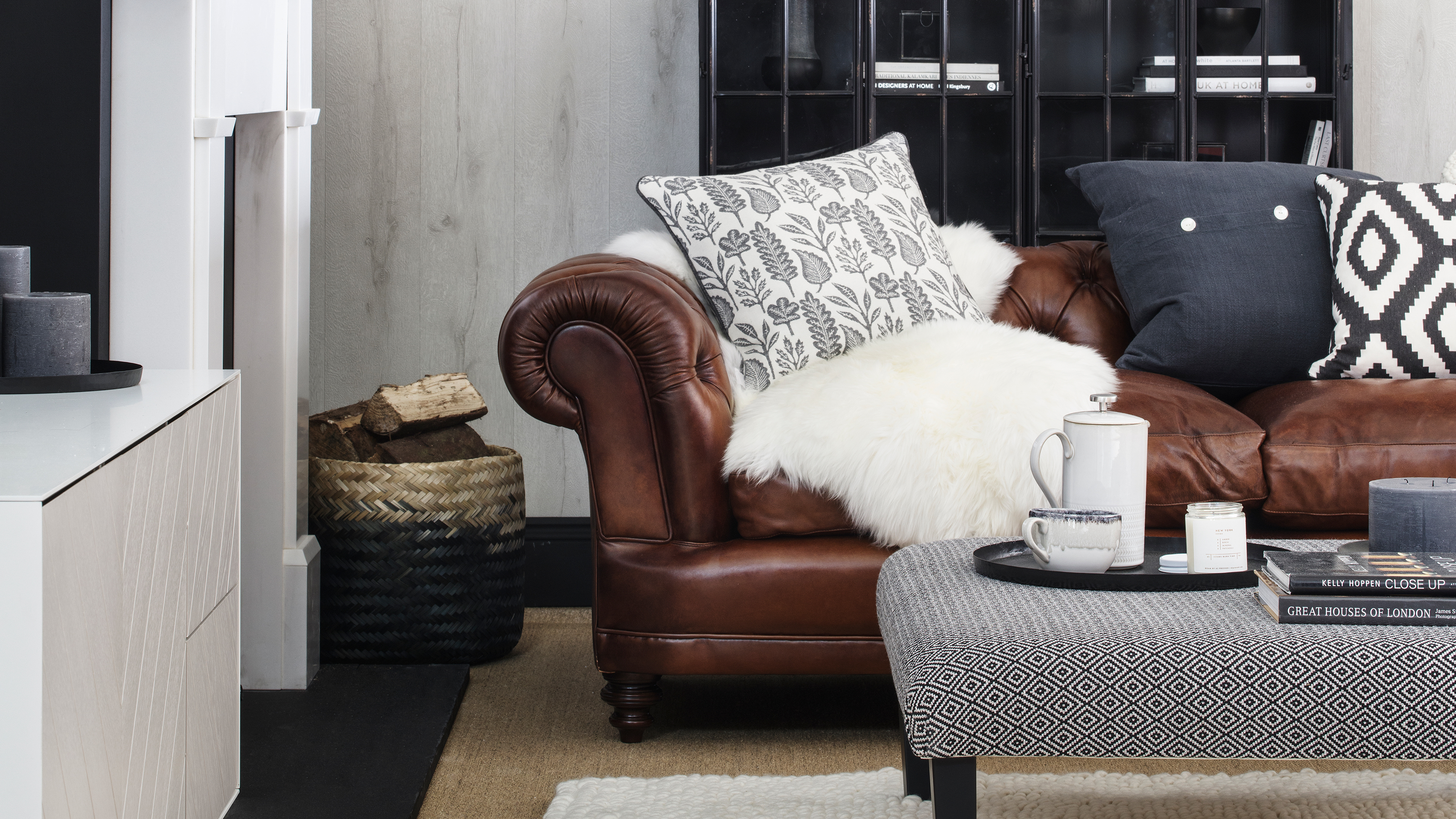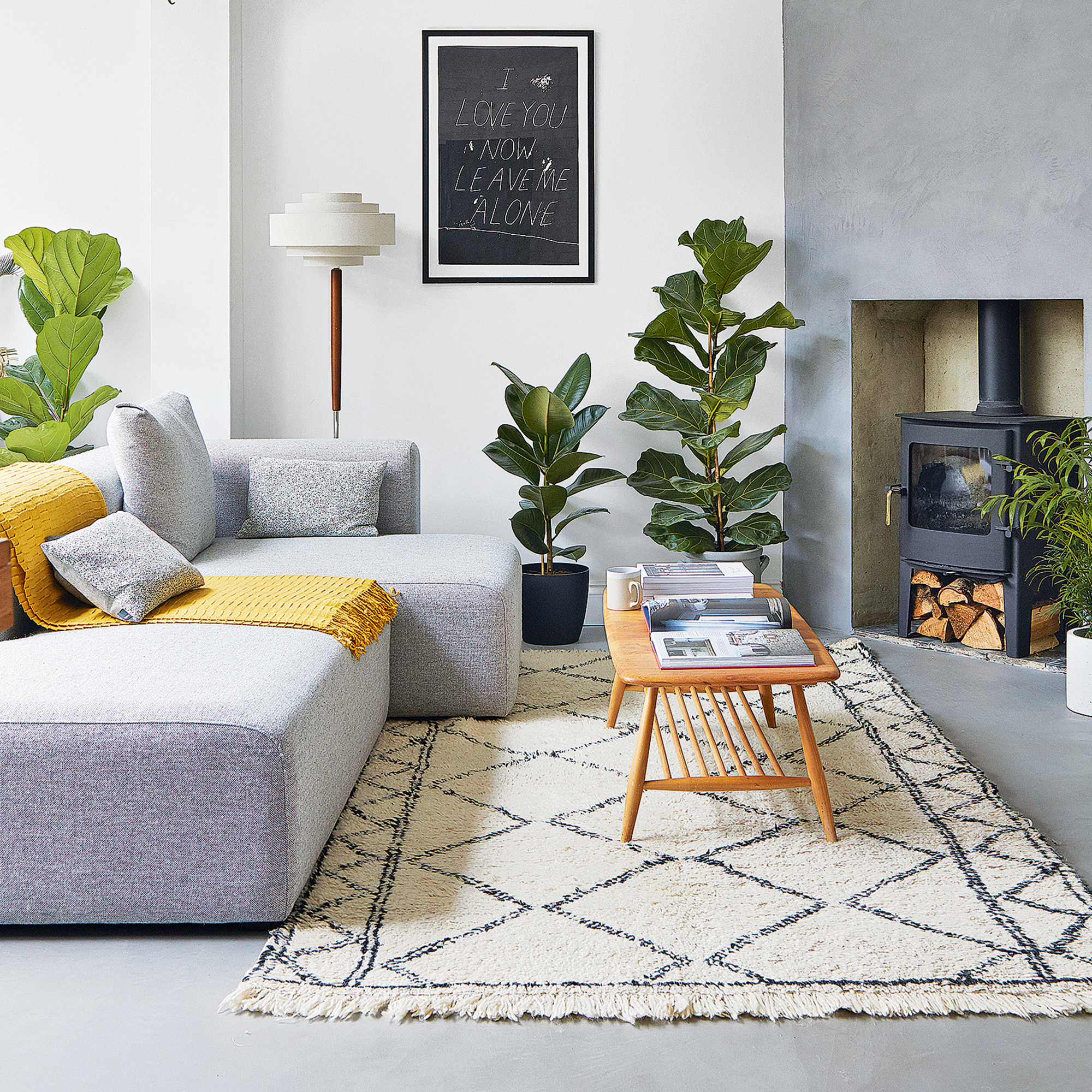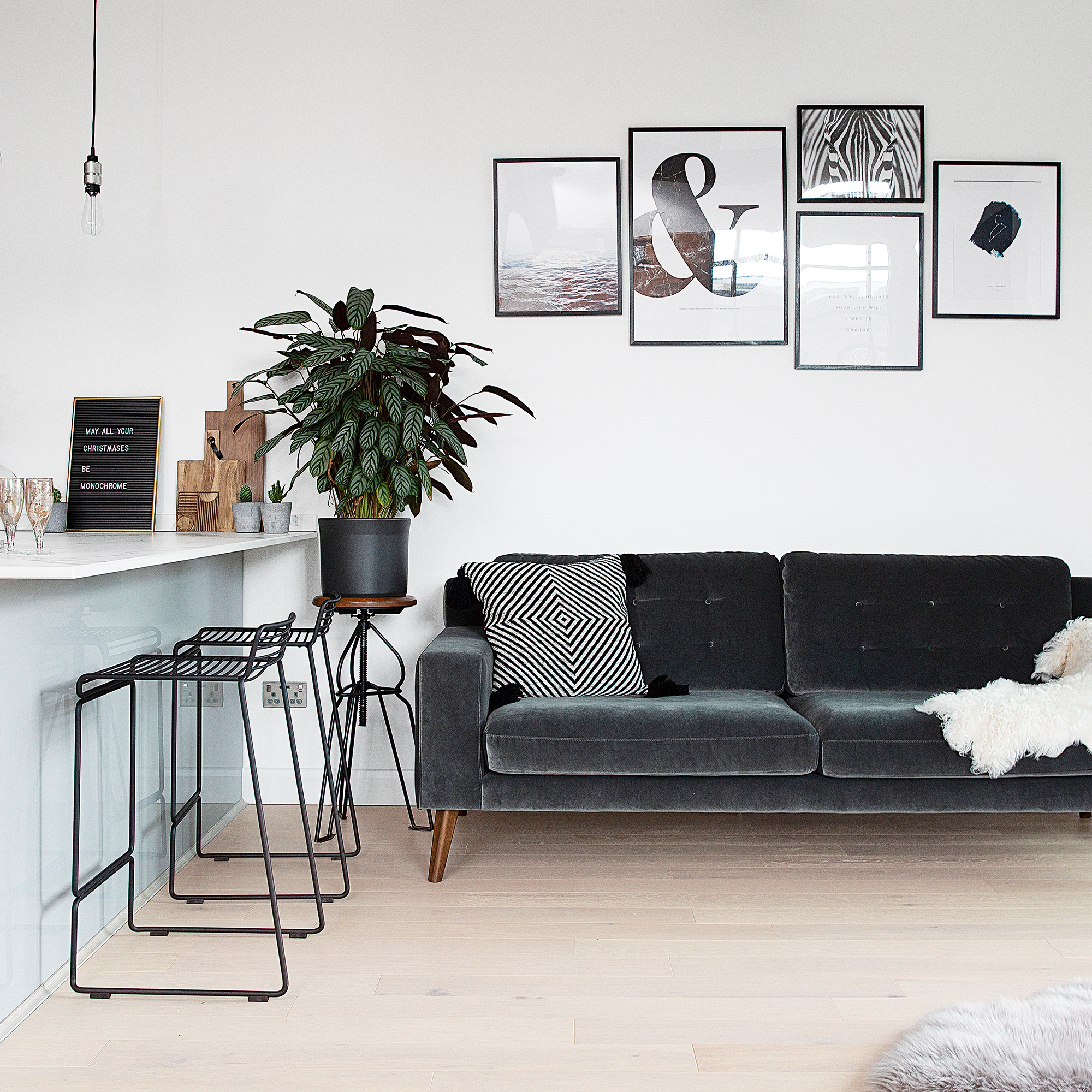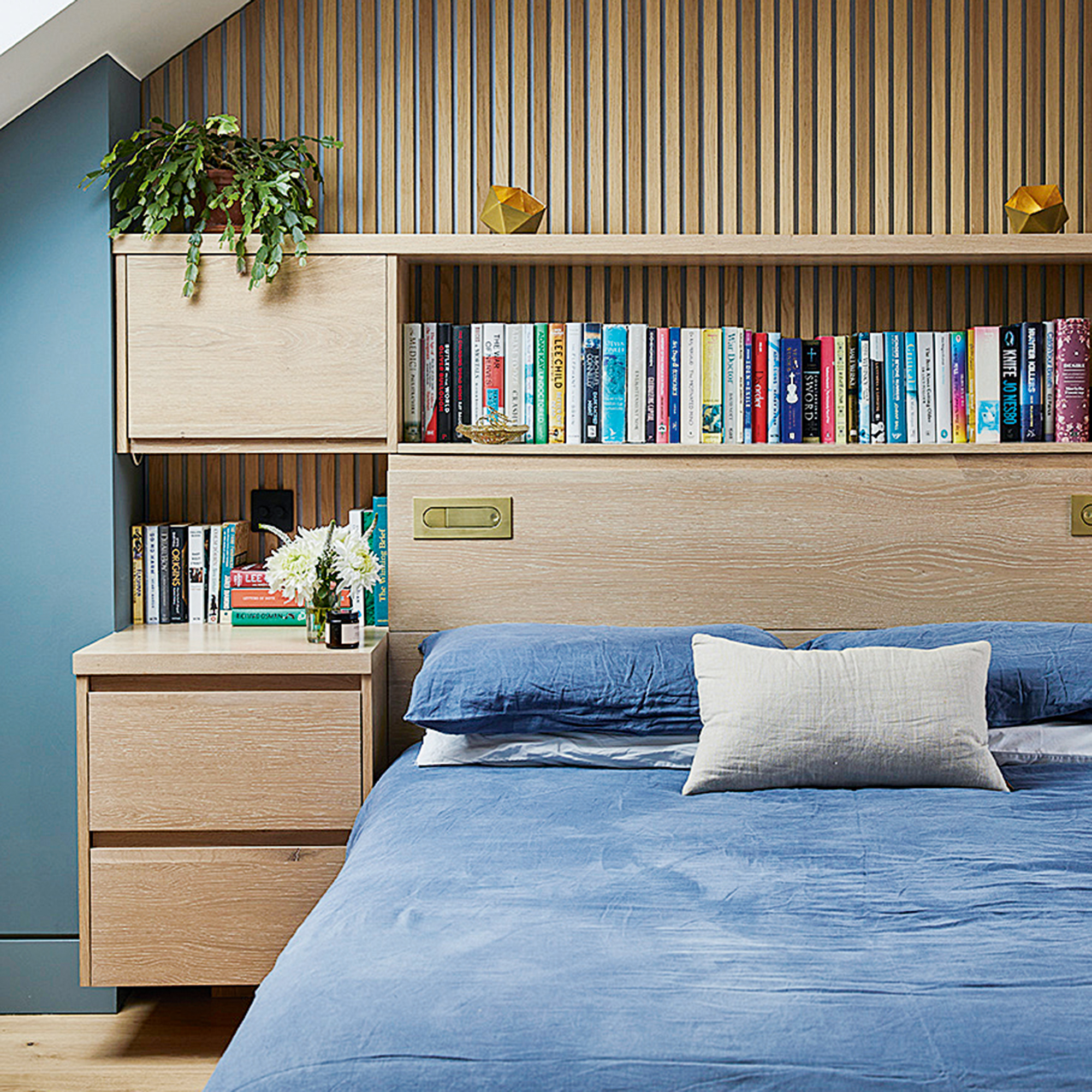How to use texture in interior design - 5 expert tips to help you elevate your room scheme
Layering a mix of contrasting textures within a room will add depth, visual interest and create balance


In simple terms, when it comes to using texture in interior design, we're talking about the feeling and visual appearance of the material a piece of furniture, surface or fabric is made of. It takes in everything from a glossy lacquered bookcase to rustic terracotta tiles, an oak side table or a floaty loose woven linen curtain panel, and how you should aim to incorporate and blend these different elements within a room's decorating scheme.
When starting to think about a new room our first thoughts are usually about colour combinations and what shade to paint the walls, or which curtain fabric or wallpaper am I going to choose. How to use pattern might also cross your mind. Chances are it's not what textures should I be adding to the space, but for a successful scheme, texture is just as important.
Just like pattern and colour, texture adds visual interest to room, and on top of this it has the power to alter how we experience the space on a far more physical level. Imagine a cosy living room with a real wood floor, layered with a chunky woven wool rug contrasted against the soft sheen of a velvet sofa draped with a nubby knitted throw. Even if all those pieces are neutral colours, the space will have visual depth thanks to the layers of texture, and the experience of walking into that room and sitting on the sofa will feel as wonderful as the space looks.
5 ways to add texture in interior design
To make adding texture to a scheme easier look for groups of materials and finishes that sit well together. For example, if the look and feel of the room you want to create is a contemporary natural kitchen diner, you might consider combining oak cabinets with reeded glass doors, a cool marble splashback and bar stools covered with rough linen.
Alternatively, if you want a luxe living space, try sumptuous velvet curtains, chrome floor lamps and a smooth leather sofa. Just like a colour scheme, texture needs to be carefully thought through and balanced, with larger areas of one material and then accent textures to add contrast.
1. Layer contrasting materials

Using texture in interior design helps to stop a room feeling flat and one dimensional. ‘Ensure you have a contrast of textures in a room, so think about matt and sheen finishes, rough and smooth materials or tight weave and loose weave fabrics,’ explains Andrew Griffiths, founder of A New Day interior design studio. ‘These are the types of contrasting textures you can mix together to create interest, whether in a neutral or more colour-filled scheme.' This could be a chunky wool rug on a polished concrete floor or smooth brass handles on wood kitchen cabinets. It’s not just about how these things feel, it’s their visual texture that’s important as well.
2. Play with light

Materials and surfaces aren't the only way to create texture. Light, and how it’s used in a space, is a key factor. ‘Consider the softening glow in a room brought about by simply covering a bare light-bulb with a rice paper shade,’ explains Jess Binns, founder of design studio Hector & Bailey.
Get the Ideal Home Newsletter
Sign up to our newsletter for style and decor inspiration, house makeovers, project advice and more.
‘Try to have several light sources at different levels throughout the space to illuminate distinct areas or features. It’s not all about touch, texture has the ability to bring comfort and delight to more than one of our senses.' A combination of uplighters, table lamps or low level pendants hung over a table or worktop will create visual depth.
3. Add accessories

The easiest way to add texture to an existing scheme is with accessories. They help too soften a space that feels cool and formal. ‘Too many hard surfaces will inevitably look cold and uninviting, but bringing in softer materials with rugs, throws, cushions and other soft furnishings will help make your space look and feel more cohesive,’ says Anne Haimes, Design Director at Anne Haimes Interiors.
However, Anne advises not just randomly adding different textures and finishes – balance is key. 'If your textures are too mismatched, you’ll only confuse the aesthetic of your space. There should always be some linking pieces for a truly cohesive look. For example, if you have gold accents, make sure this is carried throughout your room, don’t randomly inject silver into your scheme, unless this is done in an intentional way.’
4. Focus on furniture

Introducing larger textured pieces of furniture is a great way to add interest and create focal points in a space when the scheme is neutral. ‘It will ensure your room is the opposite of bland,’ says Jackie Hoyte, a Decorbuddi Designer based in Bath. She advises to ‘think beyond just fluffy cushions and a rug, and bring in highly tactile materials on bigger pieces such as rattan wardrobe doors, a boucle headboard, cement sink or reclaimed wood dining table,’ to add texture and visual interest.
Your best sofa is another key piece that can be used as a textural focus in a living room scheme – don’t just rely on cushions and throws to add texture later. Consider the actual fabric your sofa is covered in. A chunky cord, soft wool, or high sheen velvet will all create fab focal points in either a mid-century, modern country or minimal-luxe modern living room.
5. Take another look at panelling

Adding wall panelling or cladding to a whole wall or just a section is a great way to add texture to a room that lacks both visual and textural interest, and the options are so much more varied than the traditional tongue and groove or Georgian styles you may be used to seeing. Choice range from flexible ribbed and waved veneers to contemporary 3D slatted designs in oak, walnut and ebony finishes that catch the light beautifully.
‘Wood is an extremely versatile material with enough colours, species, patterns and finishes to complement any scheme and any style of home,’ explains Anthony Scott, Global Product & Innovation Director at Havwoods. ‘As an organic material, wood provides its own natural texture through veining and knotting,’ which is the ideal way to incorporate natural texture into a space.
FAQs
Why is it important to add texture in interior design?
Incorporating different textures within your scheme, whether it’s a marble coffee table sat on a sink-your-toes-in sheepskin rug or a velvet headboard idea in front of a painted panelled wall, gives the space depth and interest and prevents the room feeling bland and monotonous. ‘Without texture a room feels flat and lacks any visual substance,’ explains Olga Alexeeva, Creative Director at Black & Milk. ‘It’s good to think about how all your senses use and experience the space, mix materials, use layering to play with texture.’
How do you add texture to a blank wall?
As well as panelling and cladding you can add texture using artwork or canvases. Think of the gorgeous paint textures in an original piece, or how an intricate frame will catch the light. Choose one large piece of art, or create a gallery wall made up of a mix of different framed prints; an oversized aged mirror with mottled or foxed glass is a beautiful way to add texture in a hallway or for a softer feel try hanging a handwoven Moroccan rug to style the wall behind your sofa.
Can you use house plants to add texture?
House plant ideas are a quick and easy way to soften a kitchen scheme, which can sometimes feel cool and hard. Group smaller pots together on open kitchen shelves or go big with a statement olive tree in an open plan kitchen.
Bathrooms can also benefit from the softening textures of plants, look oversized ferns and hang from the ceiling in handwoven jute pots for even more texture. Also don’t forget dried grasses and flowers as an easy way to ramp up the texture, a floor urn filled with pampas stems will transform a bland corner in a neutral living room.

Charlotte Boyd is a freelance interiors writer and stylist, who has been creating content for some of the top interiors magazines, and brands for over 20 years. She regularly writes for ideal Home as well as producing and styling photoshoots for brands such as Villa Nova and Victoria Carpets. Charlotte is passionate about inspiring people to shop for and decorate their homes in a way that beings them joy.
-
 Will a conservatory add value to your home and how can you maximise it?
Will a conservatory add value to your home and how can you maximise it?This is what the pros say
By Amy Reeves
-
 I’ve been looking for a new signature scent for my home and The White Company's new fragrance is the exact summer holiday smell I needed
I’ve been looking for a new signature scent for my home and The White Company's new fragrance is the exact summer holiday smell I neededSantorini smells fresh, summery and sophisticated
By Kezia Reynolds
-
 How to remove algae from garden walls in five steps – and the cleaning product experts rave about for tackling it fast
How to remove algae from garden walls in five steps – and the cleaning product experts rave about for tackling it fastExperts share their top tips for getting garden walls algae-free
By Katie Sims